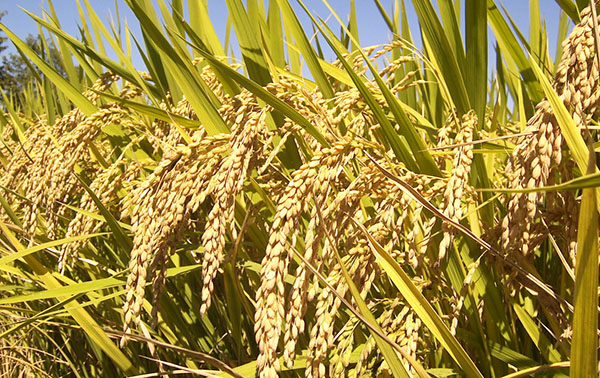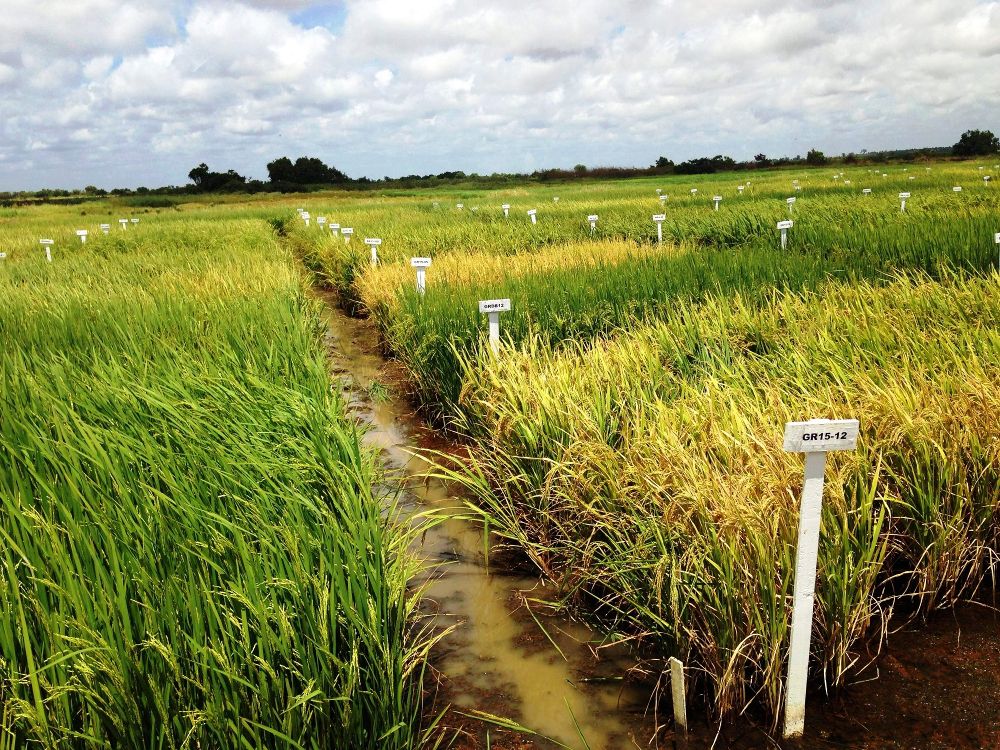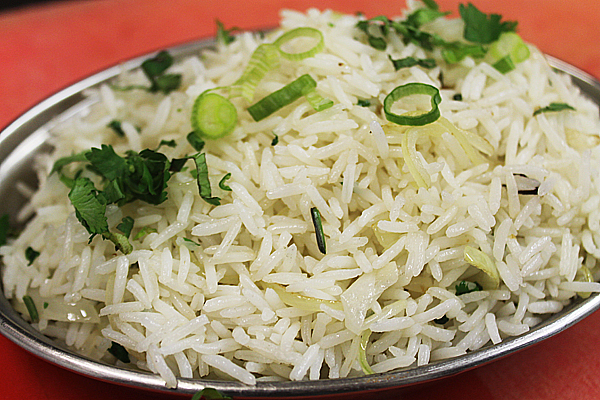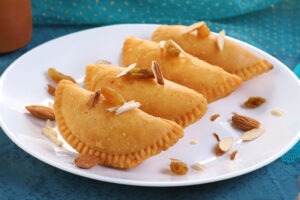In 1956, Guyana was labelled as the ‘bread basket of the Caribbean’. This is due to the production of rice and its exports to many countries. Rice is ranked as one of Guyana’s main crop and it is a staple food enjoyed by many Guyanese.
The Rice Industry

Rice Paddy
In the early 18th Century, rice cultivation was introduced in Guyana. It was introduced by the Dutch who brought seed for the crop from Carolina in North America. In 1782, when the French briefly took control of Guyana, seeds were imported from the French colony of Louisiana. Small fields to plant the rice were cultivated on the plantations in Essequibo.
Mainly, the rice cultivated in Guyana was to supplement the diet of the slaves. Soon after, some of the African slaves began cultivating small plots in their farming areas on the plantations. After Emancipation, many of the Africans acquired their own lands which resulted in an expansion of peasant farming. They did this on a small scale while some attempted to farm on a large scale, but it was not successful.
Around the 1860’s, Indian immigrants who were experienced in rice farming began to cultivate the crop on the West Coast of Demerara. By 1865 they had planted about 16 acres of rice and with great perseverance more Indians in other parts of the country joined in the enterprise. When the Indians completed their indenture, there was an increase in the cultivation of rice mainly on the Essequibo coast; more and more Indians turned to farming.
Did You Know?
As rice production expanded, imports also gradually declined. This decline continued year after year, and in 1917 the final import of 70 tons was made. Whilst, imports were declining, exports were increasing. The export trade began in 1903 when five tons found a market in the West Indies.
Rice Production in Guyana.

Varietal testing rice at RRS Burma (GRDB Image)
To produce rice in Guyana, a highly mechanized system is undergone. Tractors with large wheels are used to prepare the land which includes ploughing, harrowing and puddling. The crop is direct seeded using pre-germinated seeds which are sown onto flooded fields. The seeds are sown manually or by aircraft and the harvesting is done by combine harvesters. The paddy is then transported in bags or in bulk to the mills. The processing of paddy into rice is undertaken in the 105 mills located throughout the rice belt. The smaller mills produce rice mainly for domestic consumption whilst the larger mills concentrate mainly on exports. Most rice farms in Guyana were privately owned with the government operating the irrigation systems and rice-processing mills.
Note:
Kayman Snakar, rose from a laborer to Guyana’s most successful rice farmer. He established the rice industry on the Essequibo coast where he had his own milling, shelling, grading, drying, and storage facilities.
Organizations In The Rice Industry

GRDB’s General Manager, Nizam Hassan (Image Source: Guyana Chronicle)
GRDB – Guyana Rice Development Board – this was established by Act No. 15 of 1994. The GRDB is governed by a Chairman and Board of Directors and currently managed by a General Manager (Nizam Hassan). It is an integrated, sustainable and profitable industry producing and marketing rice for the benefit of all Guyanese. For 2018, they began their annual mill licensing exercise, a total of 23 mills have so far been licensed and the process is ongoing.
RPA – Guyana Rice Producers Association – The RPA members are mainly farmers. The RPA was established in 1946 with the objective of promoting the interest of rice producers; it is one of the oldest NGO (national non-governmental and civil society organizations) in Guyana.
GRMEDA – Guyana Rice Millers and Exporters Development Association – The GRMEDA members are mainly millers, exporters, financial institutions, input suppliers and shippers.
Export of Guyana’s Rice
Venezuela is the largest importer of Guyana’s rice. Rice is also exported to Trinidad and Tobago, Europe, Cuba, Mexico, Hati, Brazil, Colombia, Curacao, El Salvador, Guatemala, Panama, Honduras, Nicaragua, Portugal, Spain, Italy, Belgium, Ghana, St. Maarten, United States of America.
Rice in Guyana

Onion Fried Rice
Rice is enjoyed by many in Guyana; Guyanese eat it with almost anything. They enjoy making delicious foods with it such as fried rice, cook-up rice, white pudding, sweet rice; the rice can also be eaten with vegetables or dhal or with various stews like stewed fish, chicken, shrimp, etc.
Two types of rice known in Guyana are brown rice and white rice. However, in 1999, a quality and tasteful rice called the Karibee Rice was established.
Tip: Karibee Rice is the leading company of the Guyana’s Rice Industry. Products of the Karibee Rice are parboiled rice, long grain parboiled, white rice, long grain white rice, brown rice and pett rice (for pets). The rice is produced at Nand Persaud & Company Ltd.
The rice production in Guyana has come a long way; it has a history that comes with it, it was established by hard work and determination. It is eaten by many Guyanese who not only keep it for themselves but export it to other countries so that they can benefit from it as well. The rice production in Guyana is indeed like a bread basket to the Caribbean, as well as to other countries.
Article References:
- http://grdb.gy/
- http://www.guyana.org/features/guyanastory/chapter78.html
- http://grdb.gy/history-of-rice-in-guyana/
- https://en.wikipedia.org/wiki/Rice_production_in_Guyana
- https://unep.ch/etb/etp/events/Agriculture/guyana.pdf
- https://www.stabroeknews.com/2017/news/guyana/11/27/value-of-rice-exports-up-over-last-year/
- http://www.karibeerice.com/







